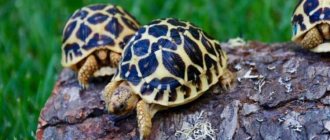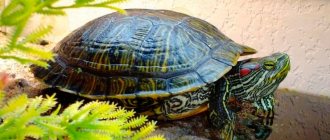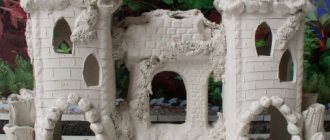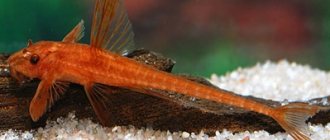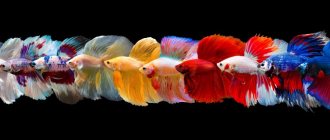Review author: “ZooVita”
Turtles are interesting animals. They have been very popular in Europe for many years, and for good reason. They do not create problems when it comes to care, but breeding these reptiles requires the owner not only to acquire knowledge, but also to be willing to deepen it.
Content
“I want to have a turtle at home,” parents often hear from their children. This reptile is an ideal pet for a child, recommended by doctors, because, theoretically, it does not cause allergies.
On the other hand, they are demanding and rather fragile animals. A common mistake in keeping pet turtles is to simply keep them on the floor. They need to be provided with proper temperature, humidity, soil, and safety.
First you need to decide whether the turtle will be an aquatic pet or a typically land turtle. Each group requires different conditions. If it is water-land, a suitable aquaterrarium with the required amount of water is created.
What you need to know first
Due to its hardiness, the red-eared slider is an excellent choice for beginners. Don’t forget that its lifespan is up to 40 years, so buying this pet is serious and long-term, almost for life. Be sure to consider the basic rules for keeping such a turtle.
- The red-eared slider needs both water and land. It must be warm on the shore, so regular access to UV rays must be provided.
- Turtles spend most of their time in the water. Therefore, the water should be changed frequently to prevent it from becoming contaminated and the required temperature should be maintained.
- It is not only dirty water that causes infectious diseases in turtles. The pet simply needs calcium, otherwise the shell will become crooked. Calcium is not absorbed by the body without heat and access to UV rays!
- Red-eared turtles can be aggressive, and they are also very strong. If you keep several turtles, conflicts may arise among them, which can lead to injury. This is especially true for representatives of different generations.
Red-eared turtles can be aggressive, so try not to handle them too much.
Another pleasant feature of red-eared turtles is their hypoallergenicity. Such a pet would be a good gift for a child, unlike cats, dogs or birds, if you are afraid of allergies. But all responsibility for maintaining the animal will fall on you: children will not be able to provide proper care.
Requirements for aquatic reptiles
Often, pet stores sell coin-sized babies and convince the buyer that a 30-liter aquarium will be the ideal solution. This is mistake. Even for a small reptile, the aquarium must be spacious, but for an adult, it must be taken into account that a minimum of 200-300 liters of water will be required.
Effective filtration is required, preferably in the form of an external filter, appropriate lighting, including UV, and a proper diet. Aquaterrariums use soil and gravel.
Chinese Trionix
An unusual, exceptional turtle with a soft, leathery green shell without scutes. Does not grow more than 20 cm.
There is another amazing feature of them - a trunk instead of the usual nose, and three toes on their paws. There are dangerous sharp edges on the Trionix's jaw, thanks to which the animal grabs prey in the water.
In China and Japan, these turtles are eaten with pleasure; their meat is valued and considered a delicacy. Trionics itself feeds on fish and crustaceans.
If you decide to keep one at home, remember that this is an active, responsive turtle that can be aggressive and bite. It is very difficult to tame her. To maintain it, buy a spacious 250-liter aquarium with a thick layer of soil at the bottom and fill it with water.
Keeping land turtles
For a land turtle, it is necessary to prepare a terrarium measuring at least 120 cm by 50 cm. The correct temperature must also be guaranteed.
In one part - 30-35 degrees Celsius with low humidity, and in the other - 25-28 degrees with humidity up to 70%. Then the reptile will be able to bask on the “island of heat” created using a heating lamp, or find a cooler place.
You need to choose the right substrate. For most terrestrial species, a homemade mixture of soil, sand and a small amount of clay works well. An alternative is turf, which is a dug-out piece of lawn containing soil.
Decorative elements and hiding places will decorate the terrarium and will be useful. Amphibians need several places to hide and feel safe. You can put pots, coconut shells, twigs with leaves. The presence of sufficient light is necessary for the normal development of the shell.
Types of small
According to the scientific classification, small turtles are considered freshwater species, the average size of which does not exceed 13 cm. A terrarium with a capacity of 100 liters is suitable for pets.
Three-keel
Small reptiles up to 13 cm. Color from reddish-brown to black, carapace with three keels. Easy to care for, an aquarium up to 100 liters is suitable. They inhabit the countries of South Asia and lead a completely land-based lifestyle in forests. They are omnivores, eat fruits and vegetables, and are not averse to eating fish. In some countries they are prohibited for home keeping.
musky
Turtles get their name from the musk glands under their shells. The length of the oval carapace is 7–13 cm. There are light inclusions on the dark head and carapace. Young turtles are distinguished by three longitudinal ridges on the carapace, which disappear over the years. They feed on mollusks, insects, and small fish. Range: Canada to South America. In the natural environment, they are the orderlies of the reservoir. Turtles swim well; the terrarium should have an island and a pond.
Spotted
Amphibious pets up to 12 cm in length. The carapace is black, without projections. Light yellow spots are evenly distributed on the shell, head and limbs. There are also color variations with orange and reddish splashes. They live at room temperature. For convenience, place shelters in a glass container and aquatic plants in a pond. The turtle is diurnal. Diet type: insectivores. Juveniles feed exclusively on animal food. Plants are rarely eaten. In nature, they live in marshy and damp areas.
Wood turtle
Scientific name: Glyptemys insculpta. Originally from North America. It is characterized by a dark gray shell. The legs, head and abdomen are orange with black spots, the limbs are short and strong.
Males are larger than females, the size of an adult is 23 centimeters, weight is about a kilogram. They are omnivores. In spring and summer it lives on the surface, in winter and autumn it chooses an aquatic environment.
Egyptian
The Egyptian tortoise is quite small, for this reason it is often kept at home in an apartment. The habitat of these individuals is concentrated in the territory of Egypt, Israel, and Libya.
Important characteristics of Egyptian amphibians:
- The size of the tortoise's body is small, its length is only 12 centimeters;
- the color of the shell is yellow;
- on the surface of the shell there are brushes edged in the form of a dark stripe;
- There are no spurs on the back paws.
Before getting this species of small turtles, it is worth preparing places for their keeping. Land animals love space, for this reason it is worth installing a large aquarium with a volume of 150-200 liters. The temperature inside the aquaterrarium should be about 25-30 degrees.
Reptile nutrition
What to feed pet turtles. Some aquatic species are typical predators, others have a certain percentage of plants in their diet, and others are vegetarians. You need to find out this before buying a pet. They eat live, dried, prepared and frozen food.
Before lunch, frozen food must be thawed and rinsed.
Live food:
- water larvae,
- mosquito larvae,
- tadpoles and frogs,
- daphnia,
- freshwater fish,
- aquarium fish (guppies, gladioli),
- water snails,
- bloodworm,
- water beetles.
However, you should not overdo it with the amount of animal food you eat. Although it should dominate the amphibian’s diet, we must not forget about plant foods:
- pansies,
- daisies,
- dandelion leaves,
- plantain leaves,
- aquarium plants,
- clover,
- water fern,
- raspberries,
- strawberry,
- watermelon,
- grape,
- apples,
- peaches
- apricots,
- tomatoes,
- Chinese cabbage.
Usually they give as much food as the animal can eat in 5 minutes. Adults should be fed 2-3 times a week, young (up to 6 months of age) - 1 time a day, newborns (up to 3-4 months of age) - 2 times a day.
Life of reptiles in the wild
Sea turtles live in the Indian and Pacific Oceans. There are reptiles in the Atlantic. They spend their entire lives in the water, coming ashore only to lay eggs. On land, reptiles are extremely slow, but in the sea they are tireless swimmers.
What do sea creatures eat? Small turtles prefer to feast on zooplankton and small nekton, while large individuals love plant foods, but will not refuse small sea inhabitants.
In one year of nesting, the female makes more than five clutches, in each of which the number of eggs can reach up to 200 eggs. Having laid eggs, the turtle swims away - it does not return to the place of laying.
FACT! The sex of the future turtle depends on the conditions and temperature. When the weather is warm, females appear; when it gets cold, males appear.
The development of future turtles in the egg lasts two months. If temperature changes occurred during this period, the masonry may completely die.
The hatchlings are removed from the shell using an egg tooth. Once hatched, they immediately become potential food for sea, land and air predators. Few manage to survive.
Hibernation and reproduction
The statement that turtles must hibernate every year is not always true. At home, this is not even advisable. Only a specialist can prepare an animal for hibernation and ensure the correctness of such rest, otherwise it will sleep forever.
If your pet stays in a corner of the terrarium for a long time and tries to burrow into the ground, it is probably getting ready for sleep. To prevent this from happening, it is necessary to fatten it and carefully read specialized literature on ensuring turtle hibernation so that the animal remains alive and healthy. With good care and proper nutrition, pets can live 15-30 years.
If you are serious about running a “turtle” business, it is better to start with 3 individuals of the same age and size - 2 females and 1 male. More than two men compete for territory and ladies. It is better to keep aquatic reptiles separately, allowing them to be together only for mating.
When buying a pet, you need to pay attention to the behavior - this will tell you whether the individual is healthy. The shell should be without cracks, there should be no spots on the skin, the mucous membrane of the mouth should be pale pink in color, saliva should not be sticky, breathing should be calm, no discharge from the mouth or nose.
Most turtles carry salmonella, as well as other bacteria and viruses that can be dangerous (especially to children). Therefore, you need to ensure that your child washes their hands thoroughly when coming into contact with a turtle.
Large matamata predator
To understand what pet turtles are like, it’s worth meeting a representative of the Matamata breed. It reaches 45 cm in length and has a rather bright and unusual appearance. The upper part of the shell has a pyramidal shape, the head is flat and triangular, at its end there is a flexible nasal process. On average, a reptile lives 50-60 years.
The matamata turtle has a unique appearance
Matamata is an omnivore; it prefers food of animal origin. He loves mollies, goldfish, earthworms, and guppies. Does not disdain even small mice and birds. It is best to feed it by introducing several fish into the aquarium: this way the turtle will have a choice, and it will not lose its hunting skills.
Since the turtle grows quite large, the aquarium should not interfere with its development as it should. Matamata is not as active as the European marsh turtle, but it is better to choose larger containers for it. Main characteristics of an aquarium for a matamata turtle:
- The aquarium should be deep - 200-250 liters.
- The acidity of the water is 5.0-5.5, you can add a little peat or tree leaves.
- Water temperature - from +28 °C to +30 °C. It should be stable throughout the year; you should not lower it in the fall or winter.
- The soil of the aquarium should be sandy so that the turtle has the opportunity to bury its head in it. In addition, plants and algae that the matamata is accustomed to in its natural environment can be planted in the sand. It is better to add driftwood, since due to its inactivity the turtle likes to lie on the bottom for a long time.
- Despite the fact that the turtle almost never comes out to bask on land, a lamp above the aquarium is still necessary.
Matamata does not like to be disturbed. She regards any contact with a person as a stressful situation. The turtle should be handled only to wash it or move it to another aquarium. It is not suitable for families with children who have pets to play with - the matamata does not tolerate such interaction.
Photos of pet turtles
What to feed?
Experts warn that with the wrong diet, turtles quickly develop vitamin A deficiency. Remember your childhood, how your mothers tried to teach you to eat “greens” - leafy vegetables.
They are valuable sources of vitamin A for turtles. Yellow, orange and red bell peppers, as well as squash, are very good. Vitamin A is the key to good vision in turtles. Turtles also readily eat all kinds of insects: worms, slugs, snails, mealworms, etc. Try not to feed your pets scraps from your table. Citrus fruits are not very suitable, as are foods high in phosphorus - fish, beef, nuts, beans.
Useful tips
It is more convenient to buy turtles from late spring to early autumn. In the warm season, the likelihood of the reptile catching a cold when delivered home is reduced. It is worth preparing a lockable box with ventilation holes in advance and covering it with paper. Trionics are transported in water or wrapped in a damp cloth.
To bring a reptile home in cold weather, you need a heating pad. The body of cold-blooded animals cannot generate heat on its own, which means that wrapping in fabric will not help to keep warm.
You must take the relevant purchase documents from the seller. This will help you get compensation if the reptile turns out to be sick. Papers may be needed when crossing the border or reselling an animal.
When purchasing a red-eared turtle, or other breeds that are not protected species, the seller must provide a receipt and a veterinary certificate. If the reptile is included in the Cites list, or is listed in the Red Book, special certificates from government agencies and confirmation of the legal origin of the individual will be required.

